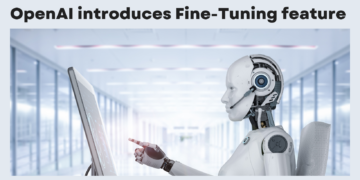Gartner decodes the Applications, Popularity, and Challenges of ChatGPT in a Q&A
ChatGPT is an Artificial Intelligence system designed to simulate human conversations. It is a Natural Language Processing (NLP) system trained on large datasets to respond to questions in a human-like way.
ChatGPT is based on the Transformer Architecture used in language models like GPT-2 and BERT. It can generate meaningful and accurate responses to questions people ask in a conversational setting. The system helps develop natural language responses to questions and text similar to the input text. This is particularly useful in content generation applications, where ChatGPT can generate text identical to existing content.
Gartner’s Q&A on ChatGPT
There is a debate on the benefits and drawbacks of this new technology since its applications could be quite far-reaching. These range from its ability to debug computer code to its potential to produce college-level essays. Gartner sat down with Bern Elliot, VP Analyst at Gartner, to discuss the more significant implications of this development. The discussion included the steps Data and Analytics (D&A) leaders need to take to ensure responsible handling of these technologies.
The first question was about the popularity of ChatGPT and how it stands out from the existing AI-powered chatbots.
Bern Elliot attributes its recognition to the technology being the perfect combination of the two current trending topics in AI. Chatbots and GPT3 are equally famous and offer excellent results when used together. Each is the outcome of different, significant advancements in their respective technology during the previous five years.
Elliot addresses the fact that the content is occasionally inaccurate. It never builds on knowledge or intellect comparable to that of a person. The words “understand” and “intelligent” may be the issue. Applying these concepts in algorithms may lead to severe misconceptions since they are loaded with inherently human meaning. The solution is to consider chatbots and Large Language Models (LLM) like GPT as possible instruments for carrying out specific tasks. Finding these technologies’ applications that genuinely assist the firm will determine success.
The second question focuses on the practical applications of ChatGPT.
On the whole, ChatGPT is a particular use case for chatbots where the chatbot communicates with a GPT information source. OpenAI has educated the GPT information source for a specific topic. So GPT has the propensity to create erroneous information unpredictably. The model’s training set of data impacts the process of answering the questions. However, the information’s use is limited to only a few circumstances, like when there is an opportunity to remedy errors.
Foundation models like GPT have many applications in computer vision, Software Engineering, and Scientific Research and Development. For instance, the healthcare industry uses foundation models to develop novel medications and interpret genomic sequences for illness categorization. In addition, the models can produce, evaluate, and audit code using natural language and intelligent contracts.
The third question discusses the ethical issues associated with AI-powered models similar to ChatGPT.
GPT and other AI foundation models mark a significant advancement in AI. They provide particular advantages, such as dramatic decreases in the price and time required to build a domain-specific model. However, they also offer dangers and ethical dilemmas.
Elliot identifies five major ethical issues related to the technology in question –
- Complexity
- Concentration of Power
- Potential Misuse
- Black-box Nature
- Reusing Intellectual Property



























